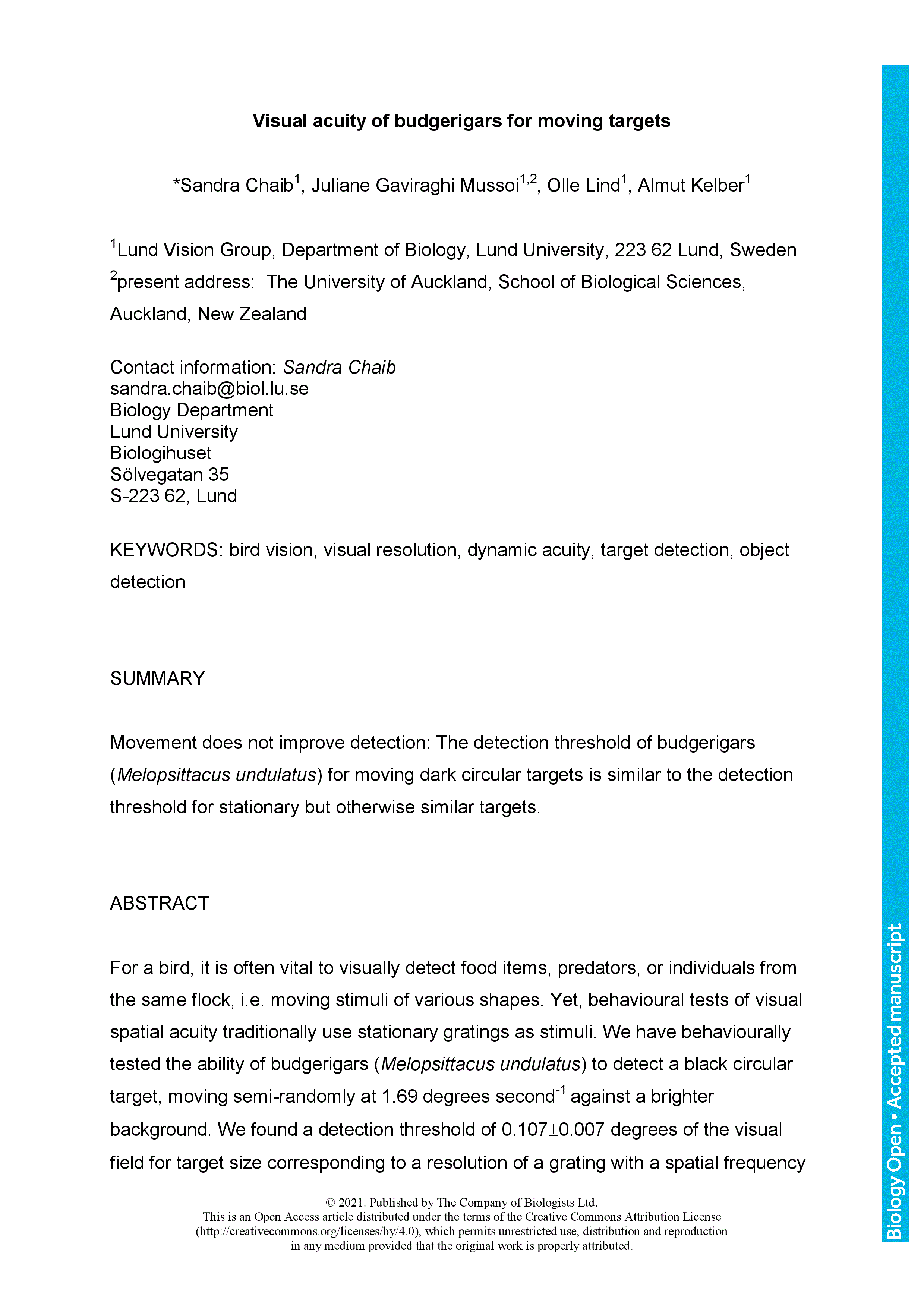For a bird, it is often vital to visually detect food items, predators, or individuals from the same flock, i.e. moving stimuli of various shapes. Yet, behavioural tests of visual spatial acuity traditionally use stationary gratings as stimuli. We have behaviourally tested the ability of budgerigars (Melopsittacus undulatus) to detect a black circular target, moving semi-randomly at 1.69 degrees second−1 against a brighter background. We found a detection threshold of 0.107±0.007 degrees of the visual field for target size corresponding to a resolution of a grating with a spatial frequency of 4.68 cycles degree−1. This detection threshold is lower than the resolution limit for gratings but similar to the threshold for stationary single objects of the same shape. We conclude that the target acuity of budgerigars for moving single targets, just as for stationary single targets, is lower than their acuity for gratings.
Visual acuity of budgerigars for moving targets
Present address: The University of Auckland, School of Biological Sciences, Auckland, New Zealand
- Award Group:
- Funder(s): Vetenskapsrådet
- Award Id(s): 2016-03298_3
- Funder(s):
Currently Viewing Accepted Manuscript - Newer Version Available
Sandra Chaib, Juliane Gaviraghi Mussoi, Olle Lind, Almut Kelber; Visual acuity of budgerigars for moving targets. Biol Open 2021; bio.058796. doi: https://doi.org/10.1242/bio.058796
Download citation file:
Advertisement
Read & Publish Open Access publishing: what authors say

We have had great feedback from authors who have benefitted from our Read & Publish agreement with their institution and have been able to publish Open Access with us without paying an APC. Read what they had to say.
Biology Open 2023 - a year in review

In this Editorial, BiO Editor-in-Chief Dan Gorelick reviews the journal's performance in 2023 and discusses his plans to improve author experience.
The Forest of Biologists
Our Publisher Claire Moulton recently visited the two Woodland Trust UK sites where we are planting new native trees for published Research and Review papers and protecting ancient woodland on behalf of our peer reviewers.
A Year at the Forefront

This series of Review articles aims to highlight the key discoveries, technological innovations, new resources and new hypotheses that have made an impact in a specific biological field during the past year. This publishing opportunity is available to early-career researchers, without a publication charge. Find out about eligibility and how to submit a proposal.
How we support early-career researchers

Biology Open, its sister journals and its not-for-profit publisher, The Company of Biologists, support early-career researchers in numerous ways, helping them grow their network and raise their profile. Find out what we can do to support you.



